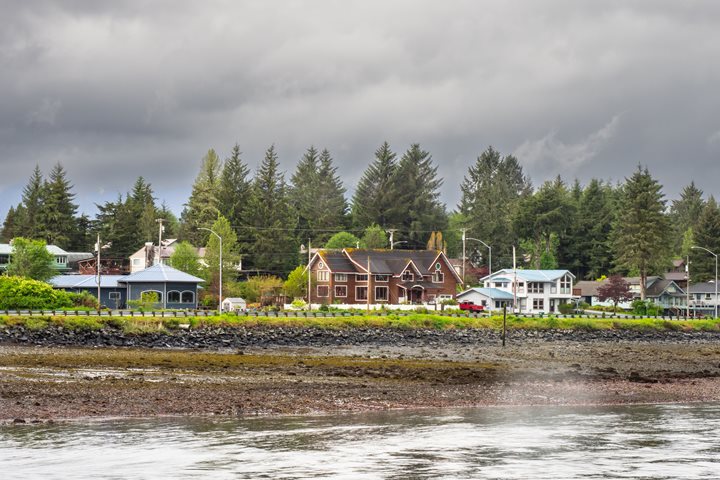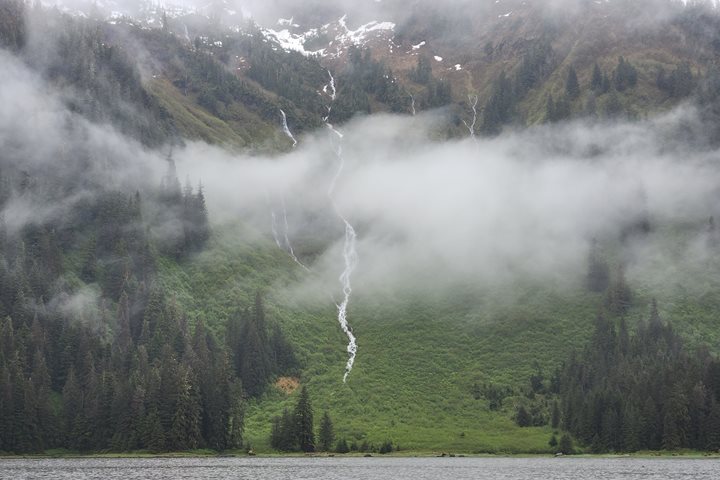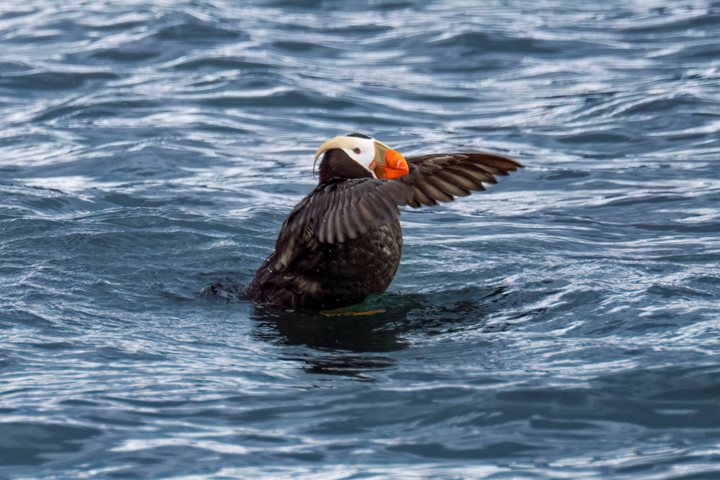This morning we found refuge from inclement seas and skies in the protection of Hanus Bay on the northeast corner of Baranof Island. Hiking amongst giants on the Lake Eva trail we were rewarded with the experience of an incredible forest and some of the largest trees we have seen yet on this voyage. Sitka spruce, the world’s largest spruce and hardest of softwoods soaked up the sun on the edge of the river and estuary and stood broad and tall with cones cached sprucely by squirrels across the forest floor. The more shade tolerant western hemlocks had great examples of heart-rot, witches broom/mistletoe and fluting. The idea of the upside down rainforest when compared to tropical forests was evident as we admired the canopy of two species (vs 200+) and the profusion of vegetation on the forest floor. Further up the trail and above the waterfall we found a pool full of sockeye salmon. Having returned to their natal grounds after swimming around the Pacific for a few years this species has come to spawn and die. Still chrome in color it is just a matter of time before these fish begin to undergo several changes in color and appearance as they cease to eat in freshwater and focus their energy on depositing and fertilizing their eggs and defending their redds (nests). Of the 4500 eggs she may deposit maybe 4-6 of her offspring will survive the gauntlet of predation in both river and ocean and repeat the cycle 6/7 years from now. The resulting carcasses from this river of flesh will serve to feed the next generation and the forest as the bears drag their catch into the woods and the decomposing carcasses feed the trees nitrogen (N15) from the ocean.
We could sense the salmon in the trees as it took 11 of us to wrap our arms around a Sitka spruce growing adjacent to Lake Eva. With such an incredible resource returning to this river and lake system every year it is no surprise the Tlingit had a seasonal camp both at the lake and outlet dating back 5800 years ago to harvest salmon and smoke them for winter consumption and trade. On our way back to the landing the last of the long walkers encountered a bear at the bottom of the falls. Walking with a determined pace, the brown bear walked to the top of the falls and then across to a pool of concentrated salmon, where it picked a salmon out of the pool and headed for the woods to feed itself and the forest the salmon that was once born in this very watershed. With some sustained motion in the ocean after lunch, we cruised south in Chatham Strait to Warm Springs Bay where we welcomed Dr. Szabo aboard and his engaging discussion of humpback whale biology. Shortly after his departure from the ship we had but another encounter with orca whales. Another extraordinary day in Southeast, Alaska!!







